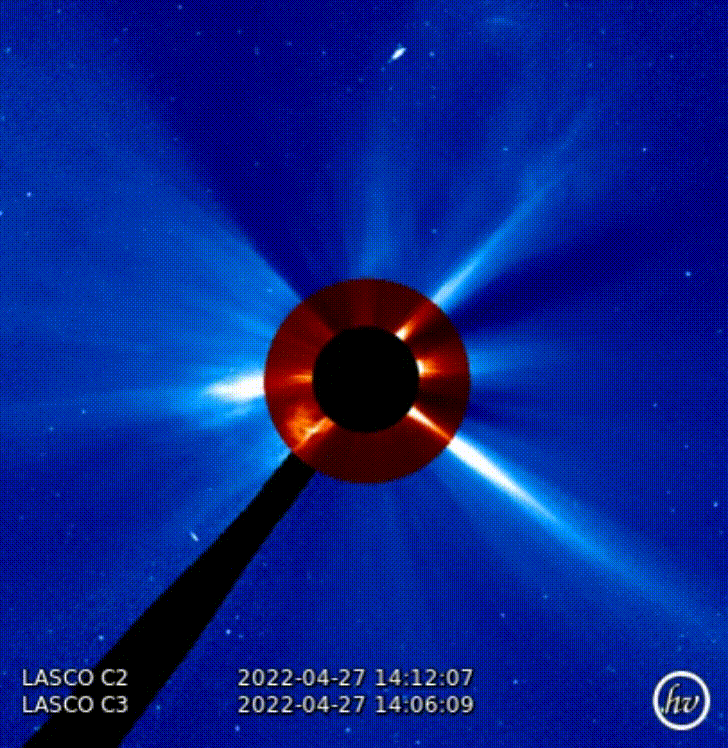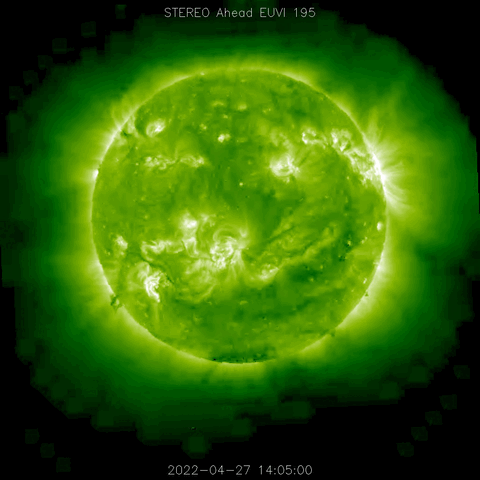Space Weather Alert - 28th April 2022
What Has Happened?
An Earth-directed Coronal Mass Ejection (CME) lifted from the Sun at approximately 1450UT on 27th April. The CME was associated with a C-class flare which originated from active region 2996, located in the north western quadrant of the Sun.
Geomagnetic activity was already predicted to be enhanced in the next 24 hours due to the presence of a coronal high-speed wind stream. If the CME from 27th April arrives whilst the solar wind remains disturbed this could lead to significant disturbances to the geomagnetic field. STORM G1 conditions are expected, with the possibility of isolated STORM G2.
Assuming clear, dark skies, there is a greater chance of seeing the aurora on the 29th and 30th April. Those in Scotland, northern England and Northern Ireland have a better chance, if the weather is favorable on the night of 29th April.
Sign-up to receive Geomagnetic Disturbance Alert emails.
Follow us on Twitter:
Follow @BGSauroraAlert for more occasional aurora alerts.
Follow @BGSspaceWeather for daily space weather forecasts.
Glossary
- BGS
- The British Geological Survey is one of the Natural Environment Research Council's Research Centres.
- CME or Coronal Mass Ejection
- The eruption of a portion of the outer atmosphere of the Sun into space, caused by rapid changes in its magnetic field. Often occurs along with a solar flare.
- Solar Flare
- Energy released by the explosive reorganisation of magnetic fields within the Sun's atmosphere.
- High Speed Stream
- A fast moving stream of solar wind, responsible for magnetic storms.
- Sunspot/Active Region
- A region of intense magnetic field in the Sun's visible outer atmosphere often associated with flares and CMEs.



